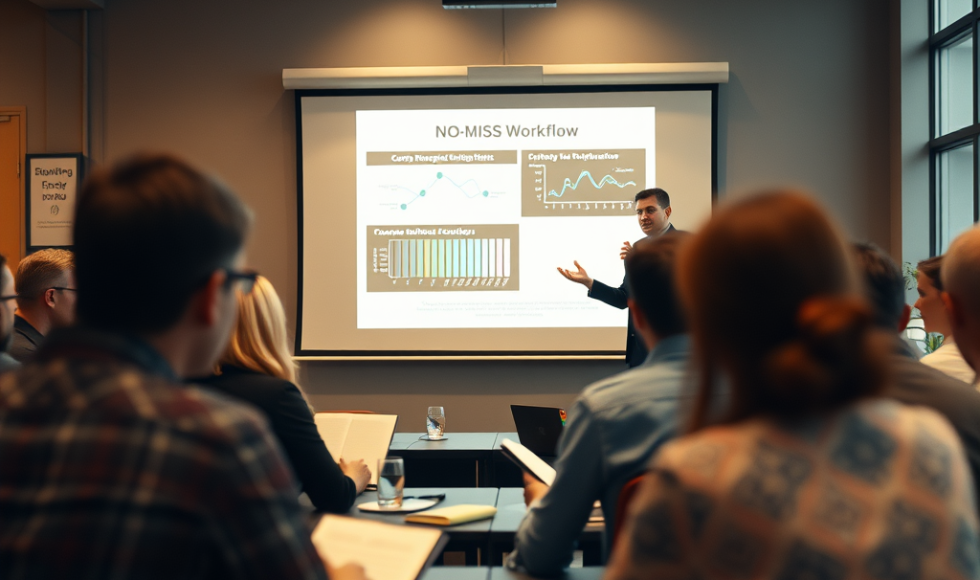Tonight, I watched a shorter Nanopore Community Meeting Boston session. Anastasia McKinlay from Indiana University & HHMI presented on “Positional mapping of active versus silenced rRNA gene clusters within A. thaliana nucleolus organizer regions. McKinlay spoke about nucleolus organizer regions in Arabidopsis thaliana. These positions are difficult to understand with shorter reads. Long-read sequencing helped […]
Individual cell analysis is possible with Oxford Nanopore Technologies (ONT). Matt Parker from ONT spoke about “Individual cells matter – single-cell data analysis with EPI2ME.” EPI2ME cloud was launched, and cloud-based analyses are possible. I have been testing and mentioning the new version in the Portable Genome Sequencing course. Bryan Leland, a Bioinformatics Manager with […]
Tonight, I watched the second half of a new Knowledge Exchange session focusing on “Sequencing and analysis of nanopore-only microbial isolates with the NO-MISS workflow.” Different extraction methods produced varying yields. Bead-beating and enzymatic lysis extractions affect read length and throughput, while fungal samples produce lower yields. Some potential issues include incomplete lysis and contaminants. Additional clean-up […]
We hosted a bioinformatics workshop with Oxford Nanopore Technologies specialists! It was fun to learn about EPI2ME updates. Tonight, I watched the beginning of a new Knowledge Exchange session focusing on “Sequencing and analysis of nanopore-only microbial isolates with the NO-MISS workflow.” The webinar began with a review of the applications related to microbial isolate […]
I continued watching the “Enhanced microbial profiling and metagenomics with nanopore sequencing” webinar. The second speaker was Steven Batinovic, a Field Application Scientist with Oxford Nanopore Technologies (ONT). The title of their session was “What you’re missing matters: delivering the future of microbial genomics with Oxford Nanopore.” Batinovic started by listing the microbiology and infectious […]
Tonight, I continued watching a Knowledge Exchange about direct RNA sequencing. Daniel Garalde, Associate Director of Technology Markets with Oxford Nanopore Technologies, introduced the Knowledge Exchange webinar I watched tonight. The title of the Knowledge Exchange is “How direct RNA nanopore sequencing can enhance your research.” Libby Snell, Director of RNA and cDNA Sample Technology, presented an update […]
I started watching a core webinar from Oxford Nanopore Technologies (ONT) tonight. Nick Sisneros from ONT facilitated the presentation. The topic was scalable human genomic characterization with nanopore. The first presentation was by Philipp Rescheneder, Senior Director of Applications Bioinformatics at ONT. They described three end-to-end workflows using EPI2ME: the human variation, cancer genomics, and […]
Tonight, I continued watching the Oxford Nanopore Technologies session from ASM Microbe 2024. The title of the session was “Celebrating a decade of DNA discoveries: 10 years of the MinION in microbiology.”Before the second speaker, the live sequencing demo was shown on the screen. The team was sequencing a microbe and had the audience guess […]
I continued watching the ONT “Empowering comprehensive sequencing at scale” session. The next speaker in this session was Brynja Sigurpalsdottir who spoke about large-scale methylation studies. They spoke about how base calling is used to detect methylation. The team sequenced 7,179 whole blood samples sequenced on 8906 PromethION R9.4 flowcells! Twenty-two samples were sequenced on […]
Bosheng Li from the Institute of Advanced Agricultural Sciences of Peking University in China presented at London Calling 2024. The session’s title was “Plant T2T genome assembly using ultra-long and adaptive nanopore sequencing.” They spoke about the importance of ultra-long reads. These reads produce N50 length >100 kb. These are crucial in the assembly of […]









